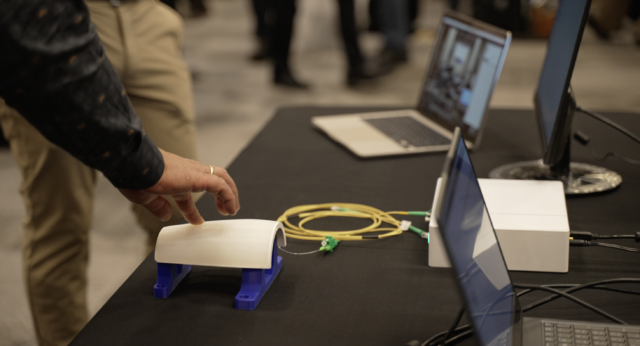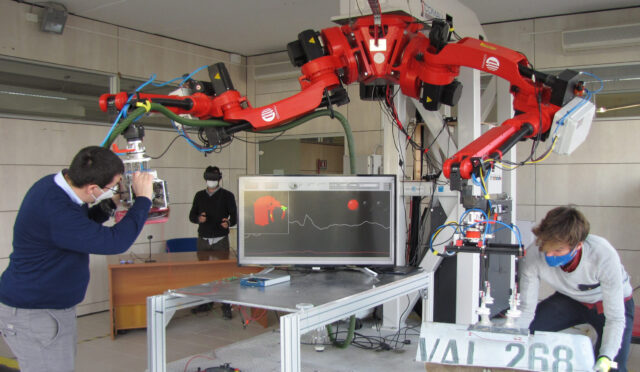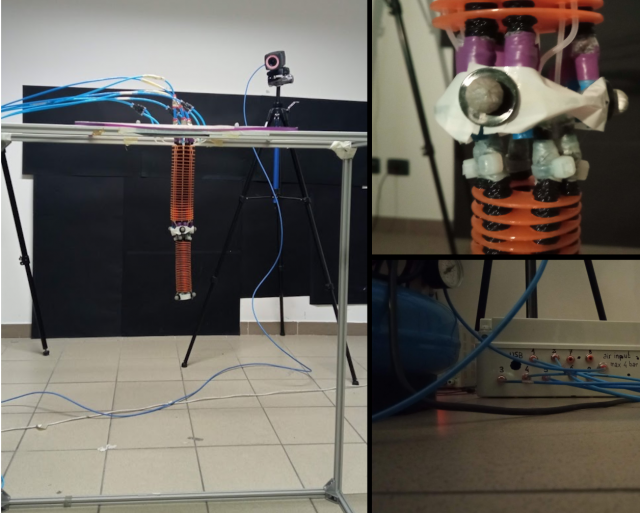TERRINet partners offer a great variety of the most advanced robotic platforms in Europe. We are presenting another inspiring project conducted by Alfonso Alcántara, a Ph.D. student of the Group of Robotics, Vision and Control (GRVC) at the University of Seville (Spain).
Alfonso works on the European project MULTUDRONE, where he is developing a multi-drone collision avoidance algorithm for outdoor media production.
He applied to TERRINet to improve the impact of his research in Smart Experience Laboratory (Smart XP Lab) offered by the University of Twente (The Netherlands), one of the TERRINet partners.
Smart XP Lab is a facility that enables researchers and students to develop technical knowledge and skills. The lab is equipped with educational applications for building or testing robotic devices; distance, pressure/force, touch, and rotation testing sensors; human and indoor drone motion capture facilities; space for testing indoor robots and drones; and rapid prototyping facilities such as a maker space, an electronics lab, laser cutting and 3D printing facilities.
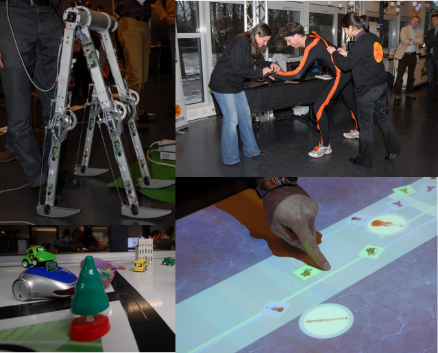
OPTIMAL TRAJECTORY PLANNING ALGORITHM
Alfonso’s multi-drone collision avoidance algorithm is a non-linear, optimization-based method for trajectory planning. The trajectories are planned and executed in a distributed manner by a team of drones using a receding horizon scheme. The method considers drone dynamic constraints and imposes them to avoid predefined no-fly zones or collisions with others.
He implemented his trajectory planner using Forces Pro [1], which is a software that creates domain-specific solvers in C++ language for non-linear optimization problems.
AUTONOMOUS FLIGHTS PERFORMED WITH THE OPTITRACK MOTION TRACKING SYSTEM
Alfonso’s experiment aimed at testing the generation of the optimal trajectories for drone navigation based on the optimization-bashed method.
A flying arena with Optitrack motion tracking system was used to get the experimental results for the drone control performance. The goal was to perform autonomous flights in a formation around the target.
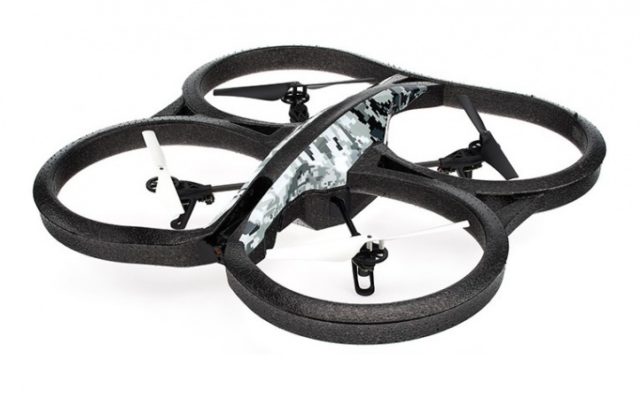
The targets were virtually placed in the middle of the drone trajectory. The movement of the targets was simulated along with the testbed. The navigation control of the drone was conducted based on the use of the precise positioning system, with a challenge to avoid the generated obstacles.
The provided data enabled the evaluation of the trajectories’ precision in accordance with the obstacle avoidance. The results served for further analysis of the logs of the trajectories and opened new possibilities for the software development to more drones. These autonomous flights served as a starting point for the following work: https://arxiv.org/abs/2009.04234
WITH TERRINet TO NEW KNOWLEDGE & THE IMPROVEMENT OF THE RESEARCH IMPACT
During the stay at the TERRINet host infrastructure, Alfonso was able
- to experiment on new installations;
- to learn how to use the Optitrack technology;
- to learn how to navigate and control the drone in manual flight;
- to test the autonomously generated trajectories; and
- with all the newly obtained knowledge to set new research directions for his research.
FULLY-COVERED ACCESS TO 100+ S.O.A. ROBOTIC PLATFORMS
“TERRINet is a very interesting way to access new infrastructures and is enabling researchers to test and improve their research data,” states Alfonso.
It allows students and researchers to access the most prominent robotic labs across Europe and to get “1-on1” support from the leading robotics experts.
Students and researchers! Do you have a brilliant research idea? Apply now. You can be granted with fully-covered access (including accommodation & travel costs) to 100+ S.O.A. robotic platforms.
The forthcoming application deadline is January 31, 2021.
Check the eligibility and conditions on www.terrinet.eu.
REFERENCE
[1] A.Zanelli, Domahidi, J. Jerez, M. Morari, FORCES NLP: An Efficient Implementation Of Interior-point Methods For Multistage Non-linear Nonconvex Programs, International Journal of Control (2017). DOI: 10.1080/00207179.2017.1316017


